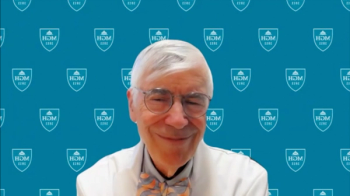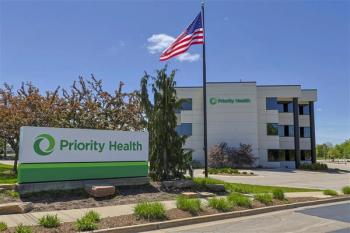
QCCA Session Explores Making Service Delivery Efficient

A panel of top practice administrators, moderated by Danielle Geiger, APRN-NP, of Nebraska Cancer Specialists, explored ways for practices to improve the bottom line at the Quality Cancer Care Alliance (QCCA) spring conference, held April 19-21, 2023.
What does “service delivery” look like for oncology practices in the coming years? To be sure, offering better cancer care is the centerpiece, but finding new revenue streams as Medicare squeezes reimbursement and making existing care delivery more efficient matter, too.
A panel of top practice administrators, moderated by Danielle Geiger, APRN-NP, of Nebraska Cancer Specialists, explored ways for practices to improve the bottom line at the Quality Cancer Care Alliance (QCCA) spring conference, held April 19-21, 2023. Taking part were: Jeff Hunnicutt, CEO, Highlands Oncology Group, based in Fayetteville, Arkansas; Beth Page, COO, Cancer Specialists of North Florida; Mel Davies, CFO, Oregon Oncology Specialists; and Mark Nelson, CEO, Northwest Medical Specialties of Puyallup, Washington, and chief business development officer, QCCA.
“We recognized we couldn’t stay the same,” Davies said, and her practice is among those that has expanded to become a multispecialty practice with rheumatology and infectious disease services. Much of the growth has happened around multispecialty infusion and injection services, and Geiger said oncology practices around the country are finding that this model offers a source of additional revenue.
In cases where the rheumatology provider also joins the practice, Geiger asked whether the physician was previously independent or came from a hospital.
Typically, Davies said, the physicians have come from independent practice. In one case, the physician was ready to retire and needed a way to hand off his practice. “They haven't really had an exit plan per se, and surviving has been a challenge for them. They were at the size that they needed to do something different.”
Hunnicutt said Highlands has seen similar situations with independent surgeons, who needed to recruit another physician to take over but didn’t know how to make the situation attractive. Folding into a community practice offers a more like-minded setting than a hospital, he said.
Geiger asked: who makes the first move. “We call it shoulder tapping,” Davies said. The Oregon practice’s size offers advantages in attracting younger doctors. “They don't want to be the only one at a practice who does something; they want somebody to learn from and peers and mentoring.”
Chronic Care Management. As the Oncology Care Model (OCM) ended, practices had to find new ways to fund the comprehensive services that patients had come to expect, which had been covered by payments for Monthly Enhanced Oncology Services, or MEOS. Hunnicutt explained how Highlands was able to tap into the Chronic Care Management (CCM) model to replace some revenue previously received through MEOS. And, by making use of electronic patient-reported outcomes (ePROs) to keep patients out of the hospital, the practice was able to tap into yet another revenue stream, remote therapeutic management, a new code launched in January. “It’s much more simple than CCM; you don't have to get consent, or a lot of these other logistical headaches that go along with chronic care management,” Hunnicutt said.
Although using the new code doesn’t offer “a massive influx of revenue,” he said, it more than covers the cost of ePRO software, which previously had been a barrier for practices seeking to monitor patients this way. “That code is really helpful to help you make a decision to give better care and offset the potential expense to your practice.”
Hunnicutt touted other benefits of using the codes to pay for ePROs: they helped boost time on treatment, which was best for the patient and for the practice’s bottom line. “You don't have the discontinuation events where you're sending them to the [emergency department (ED)], and consequently to the hospital…That’s a good thing for their care journey, and for what we can do to help them recover. So just it's a win-win all the way around.”
Geiger asked if there are any pitfalls to using the new codes, and Page weighed in.
“I know my doctors out there are not loving it yet, but it's working pretty well,” she said. “We were able to repurpose 5 nurses back into the clinic.”
She agreed that using ePROs helped keep patients out of the hospital and helped the practice meet the terms of its value-based contracts. “We were able to get shared savings out of that, because our patient population just stayed out of the ED—that was really good.”
Geiger noted that keeping patients out of the ED was a major focus of the OCM, so these tools help practices keep up that momentum. Nelson said this can create a juggling act given the staffing shortages so many practices and institutions are facing. “As much as we love getting that information, we have to deal with that information,” he said.
Page noted that practices must have protocols to get back to patients quickly. Hunnicutt recommended that practices centralize certain triage functions first before taking on ePROs, so staff are already accustomed to backing each other up on the portal. Consolidating these functions can free up staff for other things, such as recruiting. And moving them out of primary medical spaces—or allowing staff how handle ePROs to work remotely--can cut costs.
Geiger and Nelson discussed another realm that practices have taken on, both within the clinic walls and beyond: research.
Research. About 25 independent practices in QCCA and the National Cancer Care Alliance formed Exigent to help trials reach up to 1.8 million patients in the community by offering centralizing contracting, billing, and Institutional Review Board services.
“We're building out the ability to look at the structured data vs the structure of genomics and then do the matching in real time,” Nelson said. “There is no way a practice can do that without a large network, in my mind, not in a financially feasible way. So now we're beginning to see that financial gain.”
Not only does this generate revenue for practices, Geiger said, it also creates new opportunities and job satisfaction for staff. Hunnicutt said some tasks can be done remotely. “It gives you an option to keep good people. If you have someone on your team is outstanding, and maybe if they have a husband who's in the military, and they're getting shipped out to a different state, you can explore an option to be able to keep them as a productive part of your team, that's beneficial to you.”
But the bottom line also means staying on top of payers who stop paying a on a certain code, and using good data analytics to uncover these things quickly.
Value-based care is constantly evolving, Geiger said. “I don’t any of us really know what it’s going to look like, and obviously neither does CMS,” she said. “But I would think we would like to know, how is your practice saving money?”
Nelson said thanks to a close relationship with a Blue Cross Blue Shield affiliate, Northwest Medical Specialties knows where it stands relative to area hospitals in cost of care. “We were 100% biosimilar adoption, while the hospitals, there’s still many times using brand—there’s no consistency,” he said. Northwest saw large shared savings checks because of the differential in the rest of the market. Research allows the practice to avoid costs if it ties into a phase 1 study vs a salvage therapy line, he said.
“And the biggest development everyone should be aware of is this value-based enterprise concept,” which the Community Oncology Alliance has promoted in the wake of the end of the public health emergency to allow practices to continue to mail oral drugs to patients, a practice that increased during the pandemic.
Hunnicutt said Highlands had challenges during parts of the OCM due to high numbers of patients with myeloma, but in general it bought into the idea of screening and prevention—and now it is moving toward the idea of being a multispecialty practice.
“Should we be looking at labs? Should we be looking at all of the different things that patients get inside of your practice that you should be able to provide, and if you can, provide it for the whole patient?” he asked.
“Everything up here and being in QCCA is we feel what's best for the patient, and we can take those best practices and put them in place,” he continued. “I think you have to look at every service you provide for your patients and think, ‘How can I do that myself?’ without ‘I'm taking it outside of my practice.’”
Newsletter
Stay ahead of policy, cost, and value—subscribe to AJMC for expert insights at the intersection of clinical care and health economics.





























































